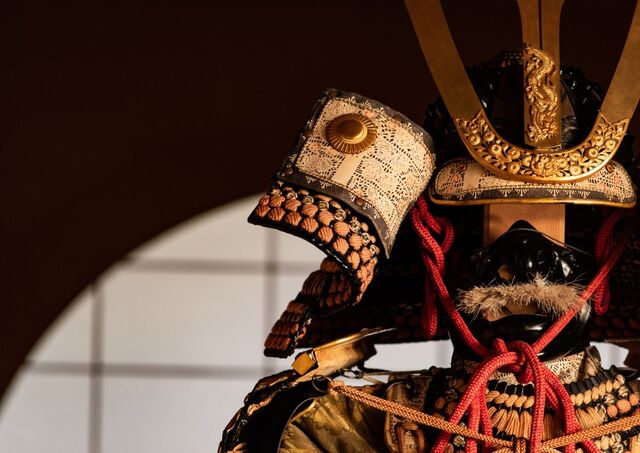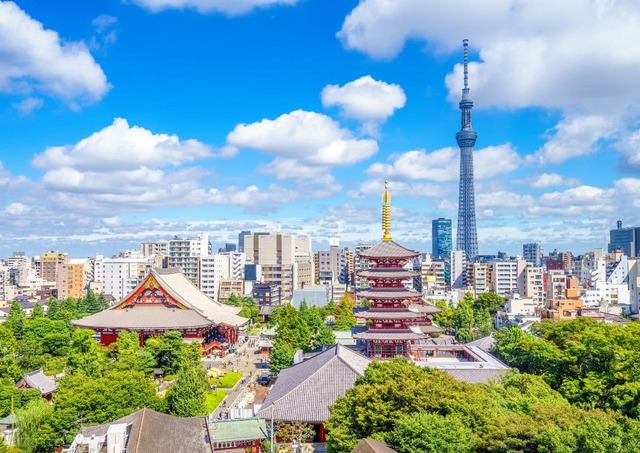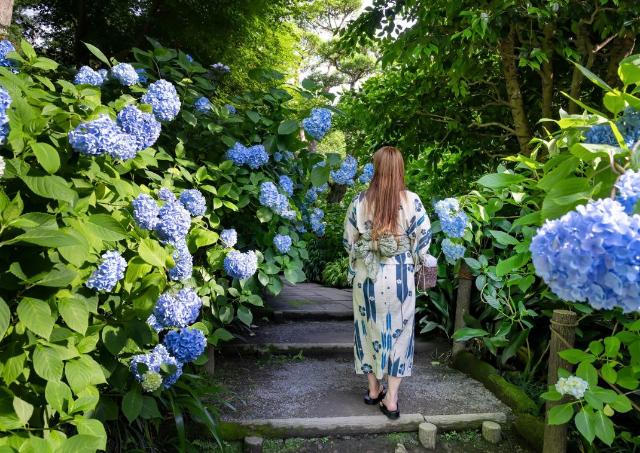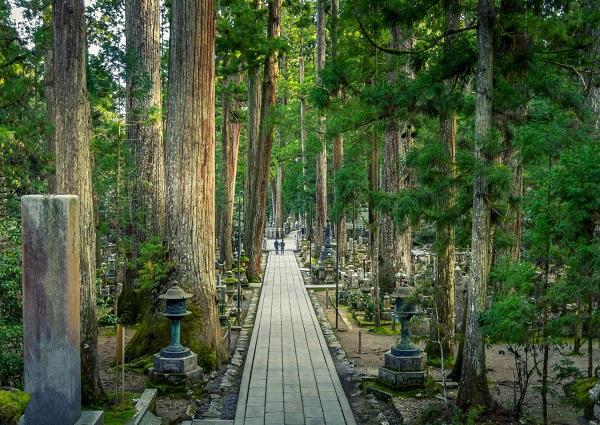Nagoya's Samurai Secrets: Exploring the City Through Its Feudal Past
Nagoya played a pivotal role in Japan's rich history, serving as a crossroad for legendary figures and cultural transformation. For those willing to look beyond the gleaming skyscrapers and bustling streets, Nagoya reveals itself as one of Japan’s most significant areas of samurai history, where story, myth, and mystery continue to captivate visitors.
Key Takeaways:
- Nagoya stands as Japan’s most significant samurai heritage destination, serving as the birthplace of the three great unifiers who shaped modern Japan.
- As a testament to Japan's enduring legacy, the city offers a unique window into the nation's historical and cultural evolution.
In the heart of Japan’s Aichi Prefecture, this modern metropolis pulses with industrial energy and technological innovation. Yet beneath its contemporary facade, the city harbours profound connections to Japan’s feudal era, when samurai warriors shaped the destiny of nations and honour was measured by the edge of a blade.
This guide reveals Nagoya’s hidden temples, legendary castle, and living traditions that connect visitors to centuries of warrior culture still thriving in Japan’s fourth-largest city, offering a fascinating journey into Japan's past.
Nagoya, The Birthplace of Legends
People often connect Nagoya with samurai, but did you know that Nagoya birthed Japan’s three most influential samurai leaders? Oda Nobunaga, Toyotomi Hideyoshi, and Tokugawa Ieyasu, who collectively ended centuries of warfare and unified Japan. Their shared origins in this region weren’t coincidental but resulted from unique geographical and cultural conditions that fostered military innovation.
Nagoya’s strategic position in the fertile Nōbi Plain made it a natural staging ground for ambitious daimyo seeking to expand their influence. Rivers provided transportation routes, while the surrounding mountains offered natural defences. The legendary Tokaido Road, a historically significant route connecting Kyoto and Edo (Tokyo), also passed through the region, further enhancing Nagoya’s importance as a centre of power and culture. This geography created the perfect conditions for the emergence of skilled military tacticians who would eventually reshape Japan’s political landscape.
These three great samurai shared several key characteristics that emerged from their Nagoya heritage:
- Practical innovation: They embraced new technologies like firearms rather than clinging to traditional methods.
- Strategic thinking: They understood the importance of controlling trade routes and economic centres.
- Cultural adaptation: They balanced military conquest with sophisticated political and cultural patronage.
- Administrative skill: They created lasting governmental structures that outlived their reigns.
According to research by Nagoya University’s Institute for Advanced Studies, the concentration of three such influential leaders from one region represents a unique phenomenon in world history. Oda Nobunaga, perhaps the most ruthless and innovative of the three, began his rise to power from nearby Nagoya Castle’s predecessor, Nawa Castle.
His revolutionary approach to warfare, including the extensive use of firearms and the systematic destruction of religious institutions that opposed him, reflected the pragmatic mindset that characterised the region’s samurai culture. Unlike the romantic ideals of bushido that would later be romanticised, Nagoya’s warriors were practical, adaptable, and focused on results rather than ceremony.
Places To Visit in Nagoya If You Love Samurai
Here are the historic places you shouldn’t miss when you’re visiting Nagoya.
1. Nagoya Castle, A Monument to Samurai Power
Nagoya Castle represents the pinnacle of samurai fortress design, built by Tokugawa Ieyasu as both a military stronghold and a symbol of political dominance. This architectural masterpiece showcases centuries of warrior wisdom through its sophisticated defensive systems and stunning artistic elements.
The imposing Nagoya Castle stands as the city’s most visible testament to its samurai heritage. Commissioned by Tokugawa Ieyasu in 1610 and completed by his son Hidetada, this architectural marvel was designed not merely as a fortress but as a symbol of Tokugawa dominance over central Japan. The castle’s construction required the labour of over 200,000 workers and represented one of the largest building projects of its era.
Exploring the castle grounds offers visitors an immersive experience, allowing them to engage deeply with the history, artifacts, and stories of Nagoya’s samurai past.
Special Features of Nagoya Castle's Samurai Heritage
- Concentric defence system: Multiple baileys and carefully planned approach routes channelled attackers into killing zones.
- Golden shachihoko: Mythical sea creatures with dragon or tiger heads and fish bodies, crowning the main keep symbolise divine mandate to rule.
- Honmaru Palace: Reconstructed using traditional methods, displaying refined samurai aesthetic sensibilities.
- Weapon collections: Museums house exceptional artifacts, including armour, swords, and war fans.
According to the Japanese Castle Institute, Nagoya Castle's defensive layout influenced fortress construction throughout the Edo period. The famous golden shachihoko weren't just decorative; they served as symbols of the Tokugawa family's divine mandate to rule.
Within the castle grounds, visitors today can explore reconstructed sections that showcase samurai daily life. The Honmaru Palace, painstakingly rebuilt using traditional methods and materials, displays the refined aesthetic sensibilities of the warrior class. These weren't crude soldiers living in spartan conditions; they were sophisticated politicians, administrators, and cultural patrons who understood that true power required both martial prowess and artistic refinement.
The castle's museum is a must-visit, featuring an exceptional collection of samurai artifacts, including armour, weapons, and personal effects that belonged to some of Japan's most famous warriors. Each piece tells a story of technological innovation, artistic achievement, and the complex social hierarchies that defined feudal Japanese society.
The intricate lacquerwork on a daimyo's armour, the perfect balance of a katana blade, or the delicate brushwork on a war fan all speak to the multifaceted nature of samurai culture.
2. The Atsuta Shrine, Where Divinity Meets Warfare
Atsuta Shrine, a revered Shinto shrine, houses one of Japan’s three Imperial Regalia and serves as the spiritual centre of samurai culture, where warriors have prayed for victory and divine guidance for over a millennium. This sacred site demonstrates how spiritual beliefs formed the foundation of samurai loyalty and honour.
No exploration of Nagoya’s samurai heritage would be complete without visiting Atsuta Shrine, one of Japan’s most sacred Shinto sites and home to the legendary Kusanagi-no-Tsurugi, one of the three Imperial Regalia. This ancient sword, also known as the Grass-Cutting Sword, represents the divine authority of the Japanese emperor and the spiritual foundation upon which samurai loyalty was built. Similarly, Aburahi Shrine stands as another important historical and cultural site, renowned for its tranquil atmosphere and deep connections to Japan’s rich history.
Spiritual Elements of Samurai Culture at Atsuta
The shrine's connection to samurai culture extends far beyond housing this sacred blade. For over a millennium, warriors from across Japan have come to Atsuta to pray for victory in battle, seek divine guidance, and make offerings in gratitude for their survival.
The spiritual aspect of samurai culture often gets overshadowed by their military achievements. Still, Atsuta Shrine reminds visitors that these warriors operated within a complex web of religious beliefs and obligations. The concept of divine wind (kamikaze) that supposedly protected Japan from foreign invasion, the ritualistic elements of seppuku, and the deep reverence for ancestral spirits all find their roots in the kind of spiritual environment that Atsuta Shrine represents.
Walking through the shrine's ancient grounds, surrounded by towering trees that have witnessed centuries of prayer and supplication, visitors can almost feel the presence of countless samurai who stood on the same ground, seeking strength and wisdom from the kami (spirits) that inhabit this sacred space.
3. Hidden Temples and Forgotten Battlefields
Nagoya conceals numerous lesser-known temples and historic sites that offer intimate glimpses into samurai daily life, including family burial grounds, prayer locations, and unmarked battlefields. These hidden gems provide authentic experiences away from tourist crowds and invite visitors to uncover the mystery of the ninja, as many of these sites are steeped in legends and secrets associated with Japan's shadowy warriors.
Beyond the major tourist attractions, Nagoya conceals numerous smaller temples and sites that offer intimate glimpses into samurai life. Some of these secret locations are also believed to have been frequented by ninjas, who played a significant role in the region's history through espionage and covert operations.
Notable Hidden Samurai Sites
Koshoji Temple
The Koshoji Temple serves as the final resting place for several members of the Oda family, including relatives of Nobunaga himself. The temple’s cemetery, with its weathered stone markers and moss-covered statues, provides a poignant reminder of the mortality that shadowed even the most powerful warriors.
Arako Kannon Temple
The Arako Kannon Temple holds particular significance for understanding the relationship between samurai and Buddhism. This temple was patronized by the Tokugawa family and contains numerous artifacts related to their rule.
Kumano Shrine
The Kumano Shrine, tucked away in a residential neighbourhood, was once the site where Tokugawa Ieyasu prayed before the crucial Battle of Sekigahara in 1600. This victory would establish the Tokugawa shogunate and usher in over 250 years of peace under their rule. The shrine's modest appearance belies its historical significance, illustrating how Nagoya's samurai heritage often hides in plain sight.
Residential shrines
Scattered throughout the city and its surrounding areas are smaller sites that mark locations of historic battles, treaty signings, and other significant events in samurai history. Many of these locations are unmarked or poorly documented, requiring dedicated exploration to uncover. Local historical societies and enthusiasts have worked to preserve knowledge of these sites, but they remain largely unknown to casual visitors.
The Merchant Warriors: A Unique Nagoya Tradition
Nagoya developed a distinctive fusion of warrior and merchant cultures, creating samurai who engaged in trade while merchants purchased warrior status and formed military alliances. Convenient transportation options contributed to Nagoya's growth as a trading centre, making it easier for goods and people to move between key destinations. This unique tradition influenced the city’s practical approach to craftsmanship and business practices.
One of the most fascinating aspects of Nagoya’s samurai culture was its close relationship with merchant activity. Unlike other regions where the warrior and merchant classes maintained strict separation, Nagoya’s strategic position as a trading centre created a unique fusion of martial and commercial interests.
Many samurai families supplemented their income through trade, while successful merchants often purchased samurai status or formed alliances with warrior clans.
Characteristics of Nagoya's Merchant-Warrior Culture
- Economic diversity: Samurai families engaged in trade to supplement stipends.
- Social mobility: Successful merchants could purchase samurai status.
- Practical craftsmanship: Artisans created items that were both beautiful and functional.
- Strategic alliances: Military and commercial interests were often aligned.
- Cultural fusion: Warrior aesthetics combined with merchant pragmatism.
This merchant-warrior tradition influenced the development of Nagoya's distinctive cultural characteristics. The city's artisans became renowned for their practical approach to craftsmanship, creating items that were both beautiful and functional.
The concept of "Nagoya-meshi" (Nagoya cuisine) also reflects this unique cultural fusion. Dishes like miso katsu, tebasaki (chicken wings), and kishimen noodles were developed to satisfy the hearty appetites of warriors while incorporating the commercial sensibilities of merchant families. Food culture in Nagoya maintains a connection to its samurai past through emphasis on robust flavours, generous portions, and unpretentious presentation.
The Enduring Legacy of Samurai Culture
Nagoya’s samurai secrets aren’t locked away in museums or confined to historical sites. They permeate the city’s character. The city’s commitment to preserving and sharing its samurai heritage represents more than historical nostalgia. It reflects a recognition that understanding the past provides valuable insights for navigating the present.
For visitors seeking to understand Japan’s feudal past, Nagoya offers an unparalleled opportunity to walk in the footsteps of legendary warriors. From the grandeur of Nagoya Castle to the spiritual power of Atsuta Shrine, from hidden temples to bustling modern streets, the city reveals its samurai secrets to those patient enough to look beyond the surface.
In doing so, it provides not just a glimpse into history but a deeper understanding of the forces that shaped modern Japan and continue to influence its future.
The story of Nagoya’s samurai heritage is far from over. The annual Nagoya Festival features elaborate processions, where over 700 participants dress as famous historical figures, including the three great unifiers: Oda Nobunaga, Toyotomi Hideyoshi, and Tokugawa Ieyasu. The vibrant parade stretching over 1.5 kilometres moves through Central Nagoya, bringing cultural heritage closer to our modern lives.
Frequently Asked Questions
What makes Nagoya special for samurai history compared to other Japanese cities?
Nagoya is unique as the birthplace of Japan’s three great unifiers: Oda Nobunaga, Toyotomi Hideyoshi, and Tokugawa Ieyasu. No other city can claim such concentrated influence on Japanese history, plus it maintains exceptional preservation of samurai sites and traditions.
What are the must-see samurai sites in Nagoya?
The essential locations include Nagoya Castle for its impressive architecture and museums, Atsuta Shrine housing the sacred Kusanagi sword, and hidden gems like Koshoji Temple (Oda family burial site) and Kumano Shrine (Tokugawa prayer site). For those interested in historic routes, the legendary Tokaido Road, which passes through the region, is a must-see for its rich traditions and iconic travel experiences.
How long should I spend exploring Nagoya’s samurai heritage?
Plan at least 2 days to thoroughly explore the major sites. Nagoya Castle requires a full day, Atsuta Shrine needs half a day, and additional time is needed for the numerous smaller temples and historical locations throughout the city.
Can I still see traditional samurai martial arts in Nagoya?
Yes, Nagoya has Japan’s highest concentration of traditional martial arts schools per capita. Many kendo and iaido dojos welcome visitors to observe training sessions, and some offer beginner classes for tourists.
What’s the best time to visit Nagoya for samurai culture?
The annual Nagoya Festival in October features elaborate historical processions and reenactments. Spring (March-May) and autumn (September-November) offer pleasant weather for exploring outdoor sites and temple grounds.
Are there tours focused on samurai history?
Our Samurai Adventure tailor-made tour takes you on a 500-year journey through Japan’s feudal past – from swordsmith craftmanship in Tokyo to the battlefields, castles, and ancient paths once walked by warriors and poets. You'll explore sacred shrines, train with archers, and unwind in traditional ryokans, all while immersing yourself in Japan’s timeless landscapes and cultural heritage.
How does Nagoya’s samurai culture differ from other regions?
Nagoya developed a unique merchant-warrior tradition where samurai engaged in trade and merchants could purchase warrior status. This practical approach influenced the city’s distinctive culture and later industrial success.
What samurai artifacts can I see in Nagoya’s museums?
Nagoya Castle’s museums house exceptional collections including armour, swords, war fans, and personal effects of famous warriors. Atsuta Shrine’s treasure house contains weapons and armour donated by grateful samurai over centuries.
Are there any ninja-related activities in Nagoya?
Yes, you can enjoy a hands-on shuriken throwing experience, where you can learn to throw ninja stars under expert guidance. This interactive activity is a highlight for those interested in ninja history and offers a fun way to connect with Japan’s legendary ninja heritage.
Where else can I experience authentic samurai culture in Japan?
If you're looking to dive deeper into real samurai heritage, we highly recommend visiting Aizu-Wakamatsu in Fukushima Prefecture. Known as the "Samurai City," Aizu is home to historic sites like Tsuruga Castle, traditional samurai residences, and institutions that still uphold the warrior code today. Read more in our blog: Follow the Way of the Samurai in Aizu-Wakamatsu.
Walk the path of the samurai
Our tailor-made Samurai Adventure tour offers a once-in-a-lifetime journey through the heart of samurai Japan
Discover the full itinerary



